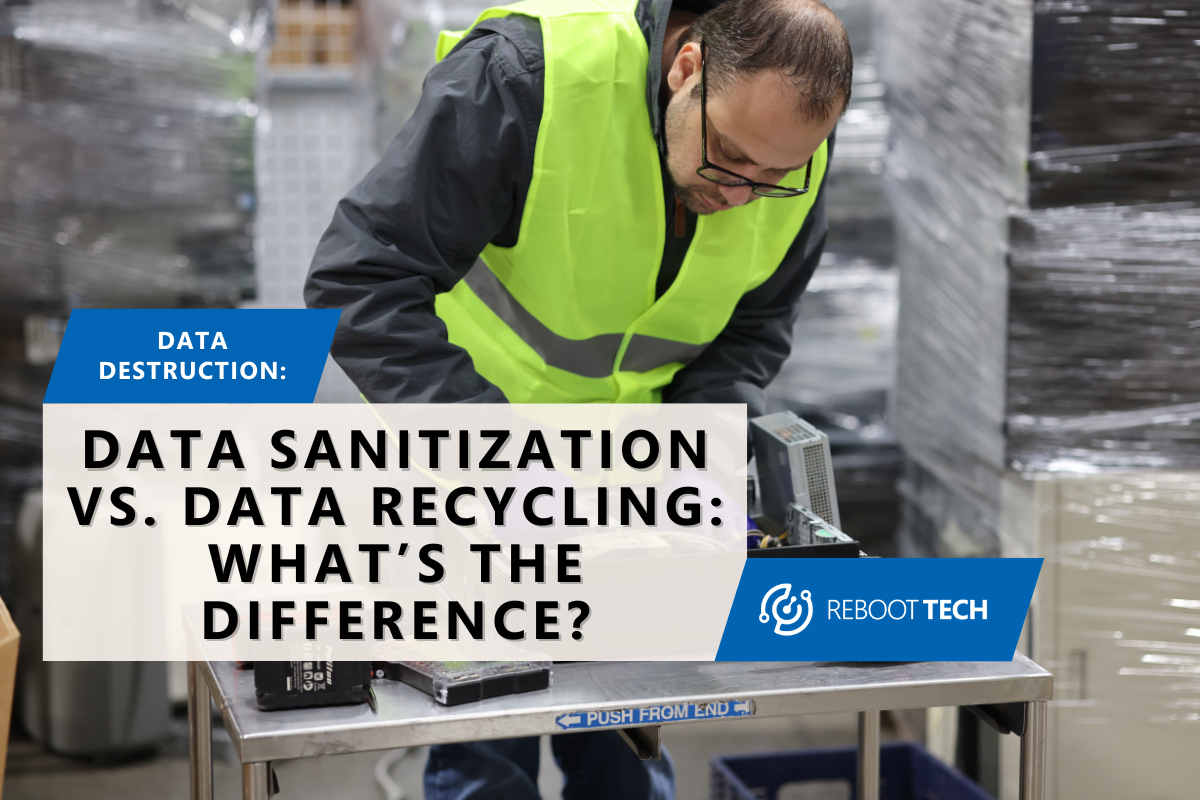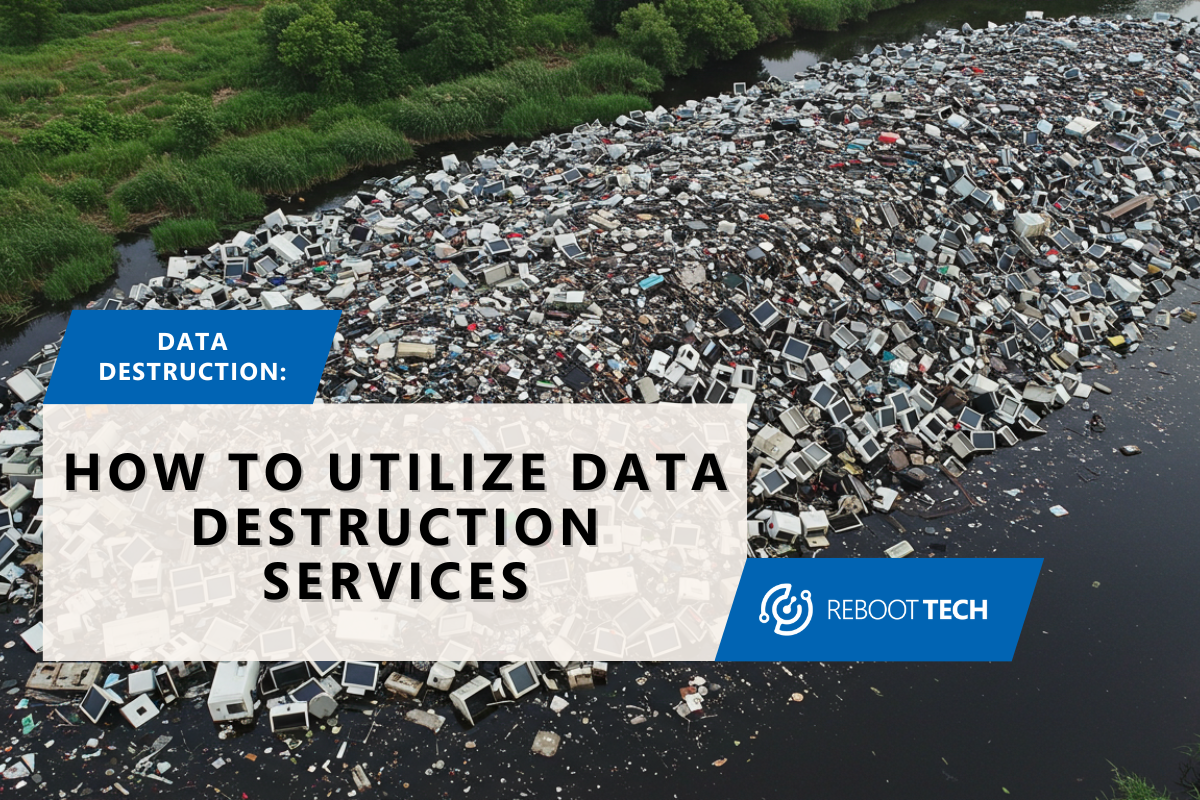
Should you use Data Sanitization or Data Recycling?
As technology grows, keeping your data safe is more important than ever. Whether you’re a business, an individual, or an organization, you need to be sure that when you get rid of old devices, your data is handled securely. This is especially important when dealing with things like hard drives, smartphones, and other electronic equipment. So, how can you make sure your personal data is really gone for good? That’s where data sanitization and data recycling come in.
In this blog, we will break down the difference between these two processes. You’ll learn how each option protects your sensitive information during the disposal of e-waste and which one is best for your needs. By the end of this article, you’ll understand how to keep your data safe and help protect the environment at the same time.
The Importance of Data Destruction When Recycling E-Waste
When it comes to e-waste recycling, many people focus on reducing landfill waste and recycling valuable materials. But it’s just as important to think about data security. Many devices still have sensitive customer data on them, even when they are no longer being used. Without proper data destruction services and data shredding, someone could recover that information, leading to identity theft, fraud, or the exposure of personal or business data.
Simply deleting files is not enough to ensure secure data destruction. Even if files are deleted, the existing data can still be accessed. That’s why advanced methods like data sanitization and data recycling are necessary when recycling electronics.
Both are vital for ensuring that your personal data or customer data is removed and properly destroyed during the recycling process. This ensures that both the environment and your information are protected.

What is Data Sanitization?
Data sanitization is the process of erasing all data from a device in a way that makes it impossible to recover. Unlike simply deleting files or resetting a device, data sanitization involves using special software to overwrite every part of the storage. This ensures that none of the existing data remains.
Common methods used in data sanitization include:
- Overwriting: Rewriting the storage space with random data so the original data can no longer be accessed.
- Cryptographic Erasure: Encrypting the data and then destroying the encryption key, making the data unreadable.
- Degaussing: Using a strong magnetic field to erase data from magnetic storage devices like hard drives.
Data sanitization is especially important if you plan to donate, sell, or repurpose your device. It ensures that your personal data is removed while keeping the device usable. For businesses, data sanitization is often required by laws like the General Data Protection Regulations (GDPR) and the Health Insurance Portability and Accountability Act (HIPAA) to make sure customer data is handled securely.
What is Data Recycling?
Data recycling is a process that focuses on securely handling and destroying data as part of e-waste recycling. When a device is no longer functional or too old, it is important to not only recycle the materials but also ensure the secure destruction of sensitive data. This method is usually handled by certified e-waste recyclers, who take care of both the physical and data destruction.
There are two main methods used in data recycling:

- Shredding: Physically destroying the hard drives and storage devices to make data recovery impossible.
- Certified Data Destruction: Some certified recyclers offer a service that provides proof of secure data destruction. This includes documentation that verifies that all data was securely destroyed following proper disposal guidelines.
Data recycling ensures that not only is the data destroyed, but the materials from the device, like metals and plastics, are recycled in an environmentally responsible way. This helps prevent e-waste from polluting the environment while keeping sensitive data safe.
What Should You Use?
Choosing between data sanitization and data recycling depends on the condition of your device and your data needs.
- Choose Data Sanitization if your device is still working, and you want to sell, donate, or repurpose it. Data sanitization will erase all personal or business data from the device while keeping it functional. This is a good option for individuals or businesses who want to give their devices a second life without worrying about data breaches.
- Choose Data Recycling if your device is too old, damaged, or no longer functional. Data recycling ensures the secure destruction of the device and any data on it. This option is great for those looking to properly dispose of electronics while being environmentally responsible. Certified recyclers can also provide proof of secure data destruction, which is important for businesses under regulations like the General Data Protection Regulations (GDPR) or the Health Insurance Portability and Accountability Act (HIPAA).
Proper Data Security
In today’s world, data security is crucial when disposing of old electronics. Both data sanitization and data recycling provide effective ways to ensure your data doesn’t fall into the wrong hands.
Data sanitization is perfect if you want to reuse or repurpose your device, as it removes all data while keeping the device functional. On the other hand, data recycling is the better choice for devices that need proper disposal, as it ensures proper data wiping and the environmentally responsible recycling of materials.
Whether you’re a business handling customer data or an individual upgrading your phone, it’s important to work with certified e-waste recyclers for proper disposal. They offer secure data destruction services, ensuring your personal information is wiped clean before disposal.
Choosing the right method helps keep your information safe while contributing to environmental sustainability. Work with a company like Reboot Tech for IT Asset Disposition, Data Destruction, and E-waste recycling. Protecting your data and the planet has never been easier—just make sure you use the right solution for your needs.






